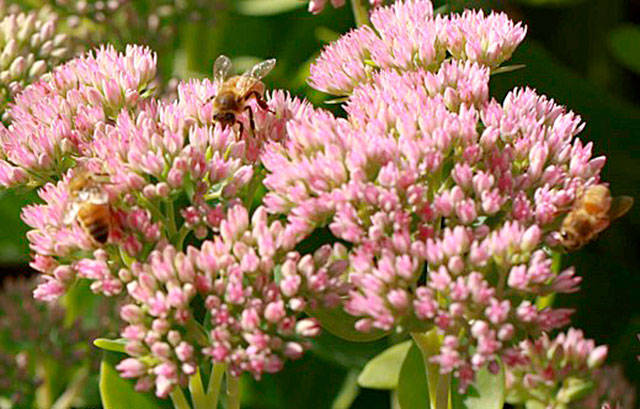With the arrival of cooler temperatures and the return of rain this month, summer is slowly coming to an end. This is the time to start thinking about getting the garden in shape for winter.
If you move plants, do it at least a month before the expected date of the first hard frost. If you moved houseplants outdoors for the summer, it’s time to bring them back inside.
Rake deciduous tree leaves as they fall and use them to mulch flower beds for the winter or save them for compost. Continue to water as usual until the rains return.
Care for your ornamental garden
• Annuals — Replace tired looking annuals with pansies, violas, annual chrysanthemums and ornamental kale and cabbage. Deadhead the remaining ones to keep them blooming for another month or so. Pull out annuals with powdery mildew but do not compost them. Collect seed from California poppy, cosmos, and calendula plants or leave them to reseed your garden.
• Bulbs, Corms, Rhizomes and Tubers — Keep cutting dahlia blooms. Dahlia plants will keep blooming until the first hard frost. Buy spring flowering bulbs this month to plant next month. Hold them in a cool, dry place. If you want your amaryllis to bloom for Christmas, put them in a dark, dry spot, stop watering, and let the leaves dry back. Leave it there until mid-November.
• Lawns — Fertilize after the rains come with a 3-1-2 slow-release formula. Renovate the lawn late this month by thatching, aerating and over-seeding. Now is an ideal time to install new lawns.
• Perennials — Continue to deadhead roses, but by the end of the month, let the old flowers go to hips (seeds) to help harden off plants for winter. To overwinter non-hardy fuchsias and geraniums, cut them back and store them in a dry place that will not freeze. Cut peony stems to the ground after the leaves fall, but do not compost the foliage. Plant new peonies, but avoid moving or dividing old peonies since they like to stay in the same place. Divide spring-flowering perennials. Sow very hardy perennial seeds.
• Shrubs and Trees — Plant new trees and shrubs (See Sidebar). Water them until the rains return. Transplant deciduous shrubs after the leaves have fallen. Do not apply any fertilizer or prune since this will stimulate new growth.
Care for your edible garden
• Berries — Remove debris around all berry plants. Apply manure in fall/winter to allow breakdown before spring. Clean-up and thin strawberries. Remove weak, old, and crowded plants to achieve narrow rows. Apply a layer of mulch after the first hard frost for winter protection. Prune out second-year raspberry and blackberry canes (canes that just fruited). Trellis first-year canes of trailing blackberries unless you live at a higher elevation.
• Fruit trees — Harvest apples when seeds turn brown and pears when full-sized but hard.
• Vegetables — Direct seed corn salad, cilantro, arugula and winter lettuce. Sow a cover crop in the summer veggie beds as they are emptied. Mulch beds that won’t hold winter or cover crops. Harvest winter squash and pumpkins when their stems begin to shrivel and dry and when the skin is so hard that it can’t be pierced with your fingernail. In any case, be sure to harvest them before the first hard frost. Tomatoes will not vine ripen with the advent of cool night temperatures. Pick almost ripened and shiny green tomatoes to finish ripening inside.



